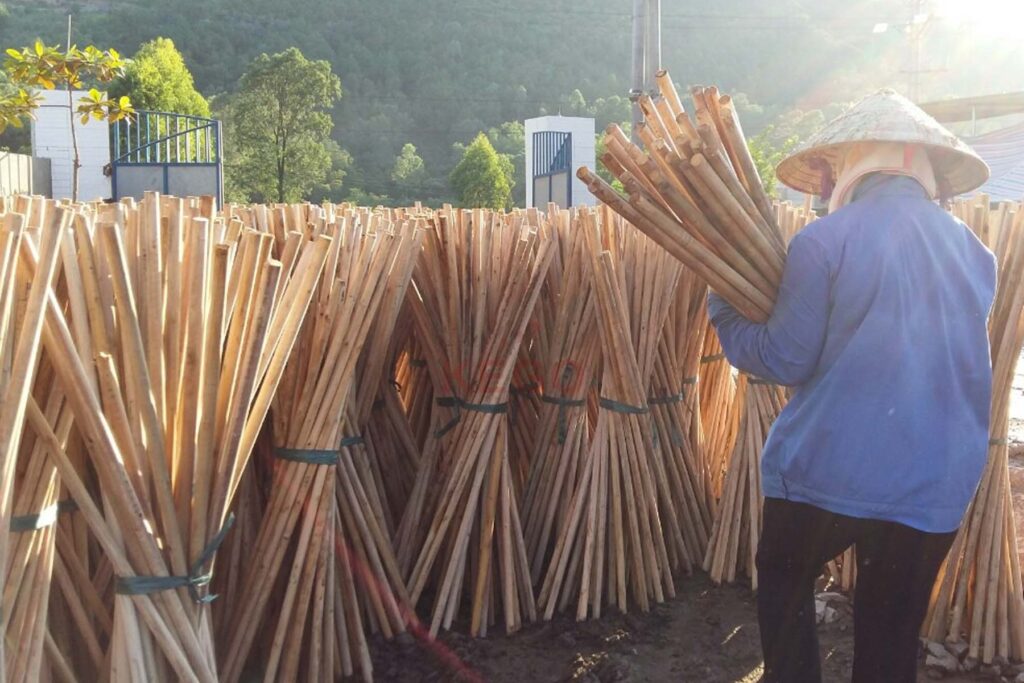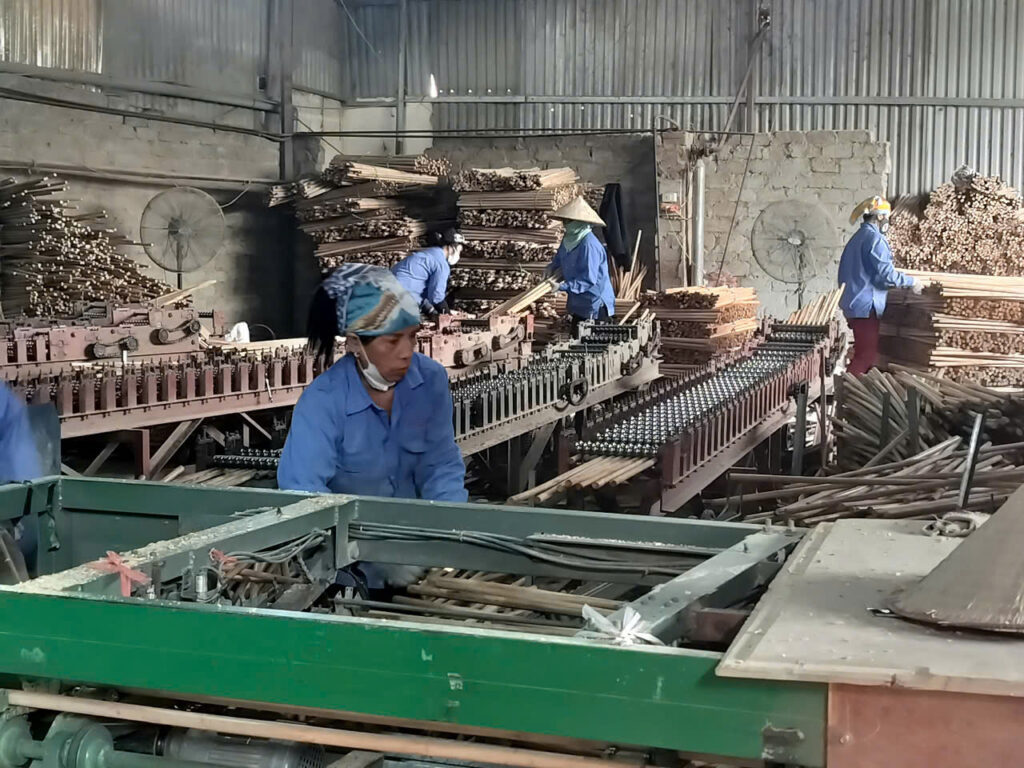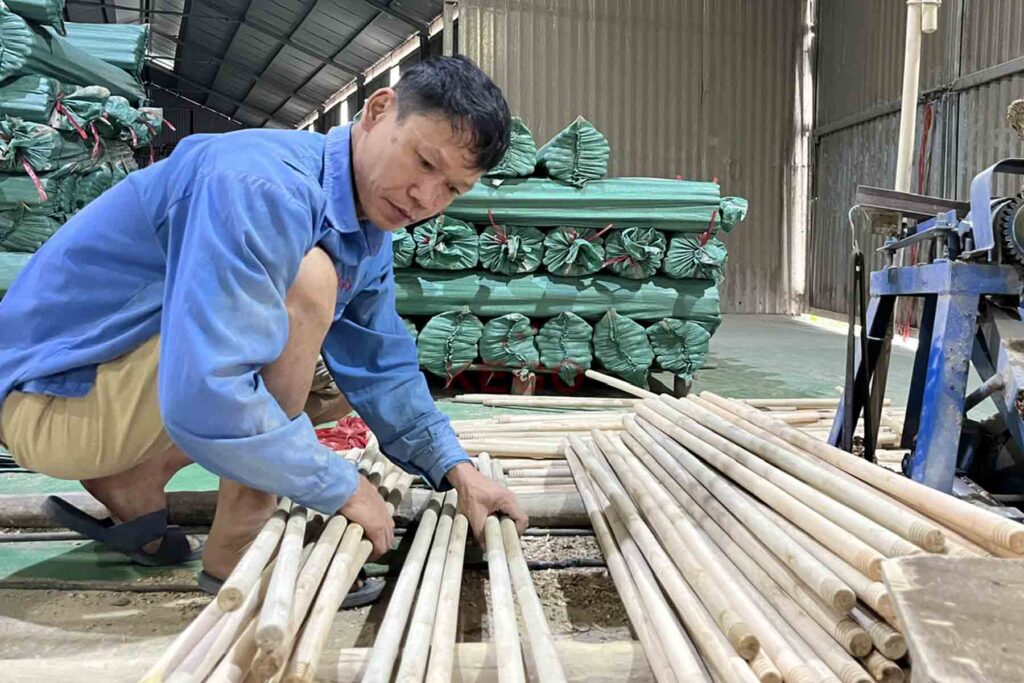Wooden broom handles are essential for household and industrial cleaning tools. Vietnam has become a leading exporter thanks to high-quality craftsmanship and abundant wood resources. This article explores the full production process—from raw wood core to export-ready wooden broom handles.

1. Core Cutting
The journey starts with cutting logs into square or rectangular cores. These cores are usually made from eucalyptus — chosen for strength, flexibility, and durability.
Logs are carefully selected to ensure they are straight, crack-free, and low in moisture.
2. Straightening
After cutting, the wood cores are often slightly bent due to natural tension. A straightening machine is used to align them properly. This step is vital to ensure handles remain straight during use and meet export standards.

3. Sanding
Once straightened, the cores are sanded to remove rough surfaces and splinters. This process involves:
- Rough sanding to remove outer layers
- Fine sanding for a smooth and safe finish
Sanded handles are clean, safe to touch, and ready for shaping.
4. Rounding and Threading
The next step is rounding the handle to a standard diameter—typically between 22mm and 28mm. After rounding, the threading process is applied if required.
There are two main types of threads based on the target export market:
- Italian thread (European standard)
- Mexican thread (American standard)
Threaded handles allow easy attachment to broom heads. The threading machines are calibrated precisely to match the required specifications.
5. Bundling and Packing
After threading, the broom handles are sorted, bundled, and packed. Depending on customer needs, packing methods include:
-
Woven bags wrapping
- Wooden pallets
Proper packing protects the handles during long-distance shipping and helps in easy handling at warehouses.

Conclusion
Vietnamese wooden broom handles are widely exported to the United States, Mexico, South Korea, Japan, the Middle East, and South America. These products meet strict standards in terms of straightness, smoothness, accurate threading, and moisture control. In addition to economic value, the industry supports sustainable forest practices and provides stable employment for rural communities. This balance between quality production and environmental responsibility has helped Vietnam build a strong reputation in the global market.
The production of wooden broom handles is a step-by-step process that requires precision and care—from core cutting and straightening to sanding, rounding, threading, and final packing. Thanks to strict quality control and customization options like Italian or Mexican threads, Vietnam remains a trusted source for broom handle exports worldwide.
